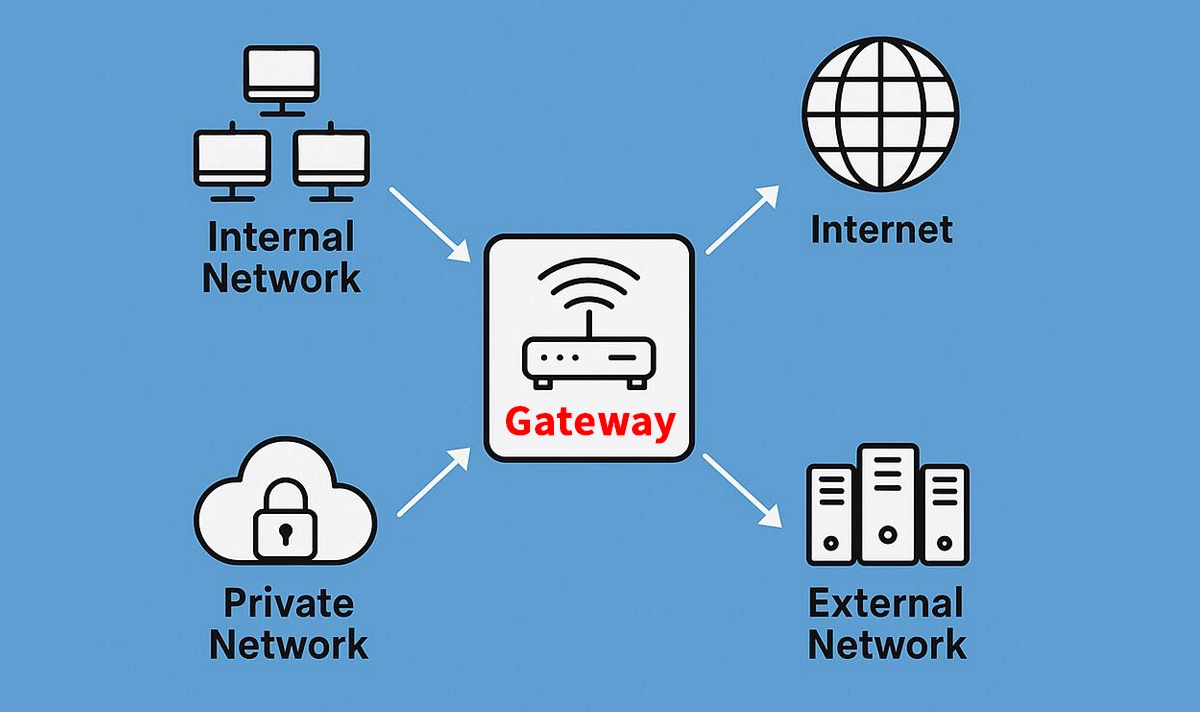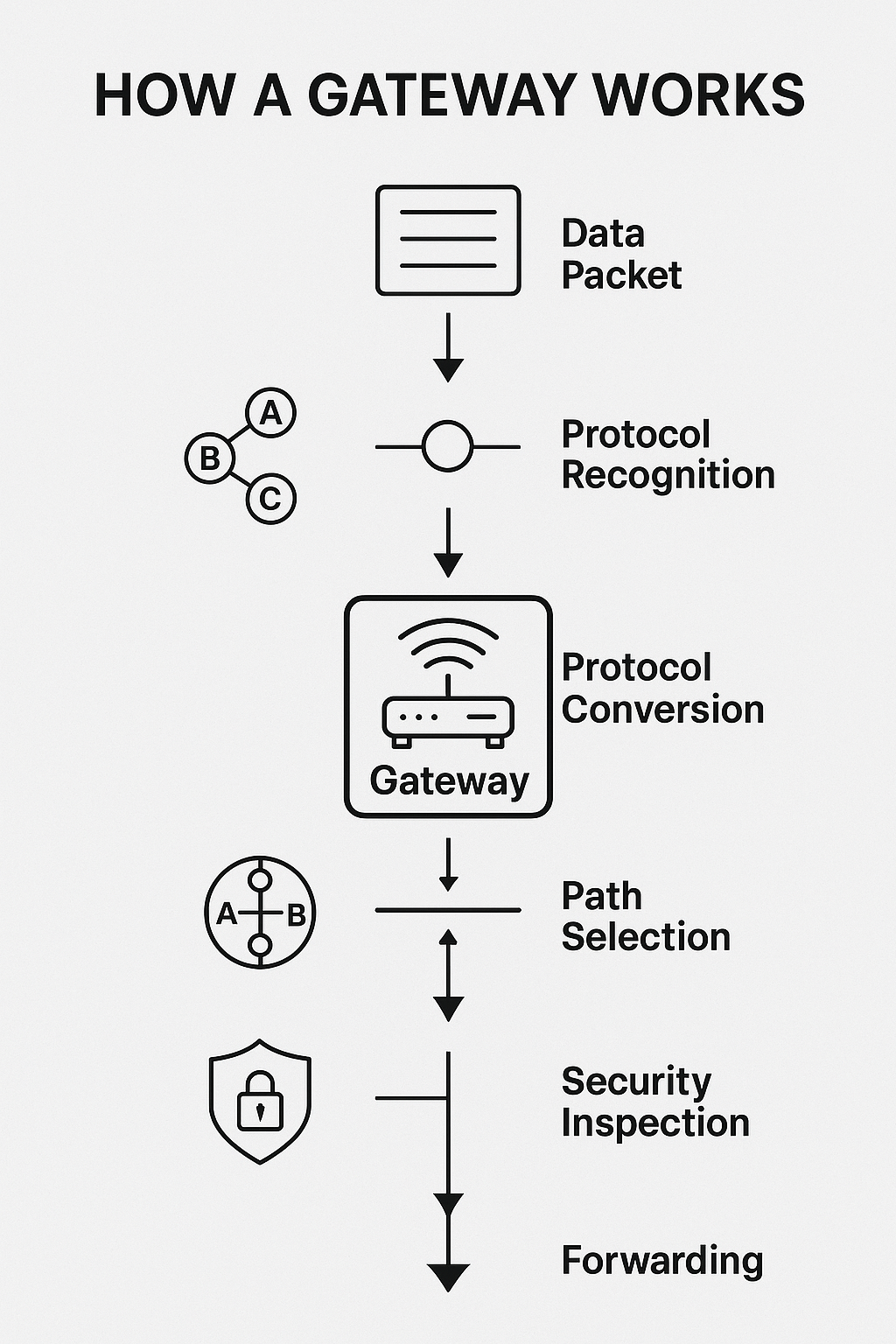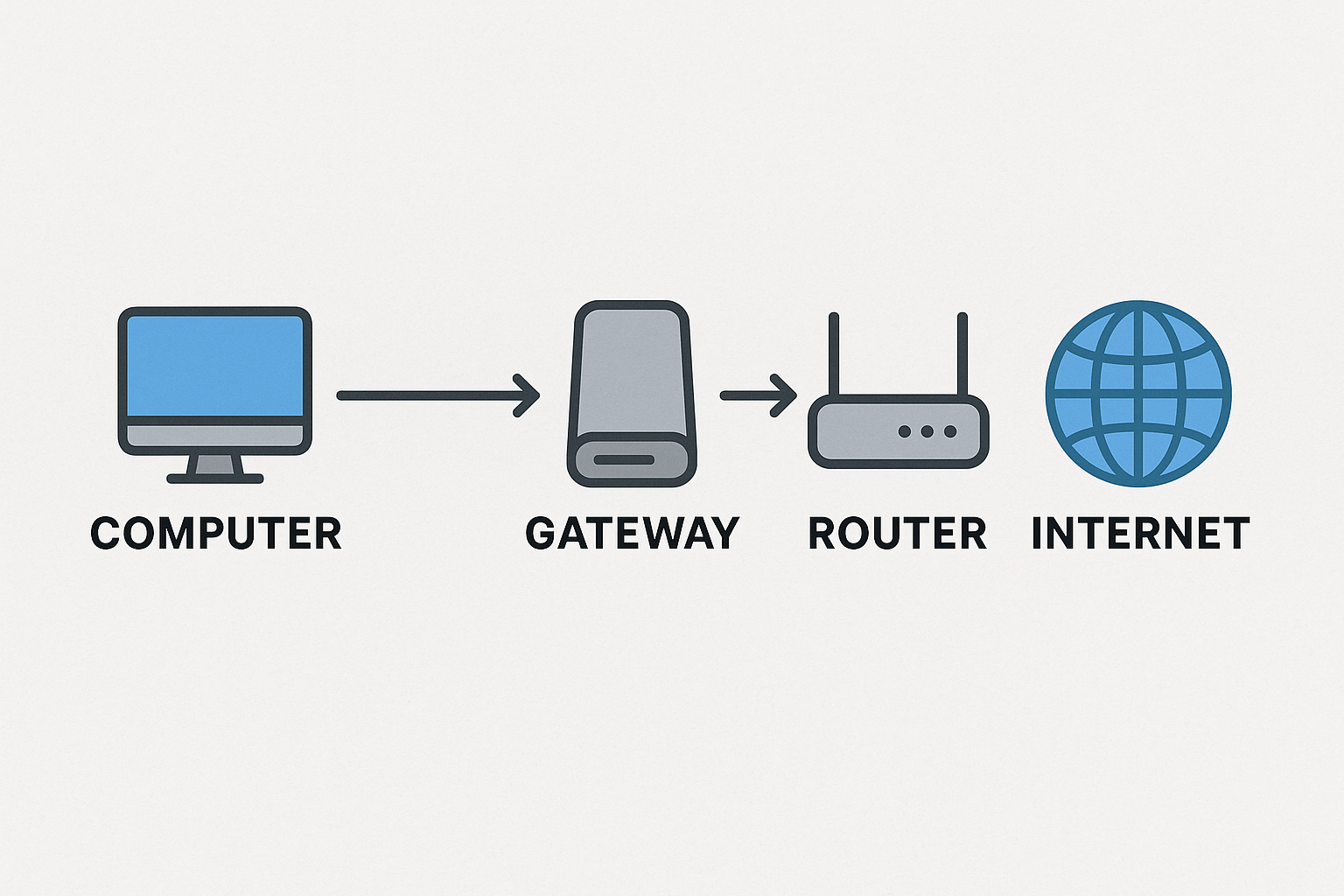
🔄 What Is a Network Gateway?
A network gateway is a critical device or node that acts as a bridge between two different networks using distinct communication protocols. It enables data to flow seamlessly between networks that would otherwise be incompatible — for example, between a local area network (LAN) and a wide area network (WAN), or between an internal enterprise network and the internet.
In essence, a gateway serves as the “translator” and “controller” of inter-network communication. Without gateways, most digital communication systems — from cloud services to IoT devices — would be unable to interact efficiently.
🔄 Key Functions of a Network Gateway
Network gateways perform several essential roles in ensuring secure, reliable, and efficient data exchange:
a. Protocol Conversion
Different networks often use distinct communication protocols (for example, TCP/IP, MPLS, or MQTT in IoT). A gateway converts data packets between these formats so both sides can understand them.
b. Network Address Translation (NAT)
Gateways often perform NAT, mapping private IP addresses within a LAN to a public IP address used on the Internet. This helps conserve IP resources and adds a layer of security by hiding internal network details.
c. Data Routing
Acting similarly to a router, a gateway determines the most efficient route for transmitting packets between networks, prioritizing speed and reliability.
d. Security Management
Modern gateways include firewall and filtering functions to control incoming and outgoing traffic, detect anomalies, and prevent unauthorized access.
e. Connectivity Management
In enterprise and industrial systems, gateways maintain persistent, fault-tolerant links across hybrid networks — whether wired, wireless, or optical.
🔄 Common Types of Network Gateways
Different types of gateways are designed for different applications. Below are the most common categories:
Gateway Type | Primary Function | Typical Use Case |
|---|---|---|
Internet Gateway | Connects private networks to the public internet | Corporate networks, ISPs |
Cloud Gateway | Connects on-premises infrastructure to cloud platforms | Hybrid cloud environments |
IoT Gateway | Bridges sensors/devices using protocols like MQTT, CoAP, or Zigbee | Smart factories, IoT edge systems |
Voice Gateway (VoIP) | Converts voice signals between IP networks and PSTN | Unified communication systems |
Security Gateway | Manages authentication, encryption, and firewalling | VPNs, enterprise perimeter defense |
API Gateway | Manages API requests between microservices | Web applications and service-oriented architectures |
Data Gateway | Transfers data securely between local servers and cloud services | Power BI, Azure, hybrid analytics |
🔄 How a Gateway Works

A gateway operates at multiple layers of the OSI model — typically from the network layer (Layer 3) up to the application layer (Layer 7).
Packet Reception: The gateway receives data packets from one network.
Protocol Interpretation: It analyzes the header and payload to determine the protocol and destination.
Conversion & Translation: If the protocols differ (e.g., Ethernet vs. Wi-Fi, or TCP/IP vs. MQTT), it converts the packet format.
Routing Decision: The gateway uses routing tables and policies to determine the best path to forward data.
Security Checks: Before forwarding, it applies firewall rules, intrusion detection, or encryption where applicable.
Transmission: The data is sent to the target network or device in the correct format.
This process occurs continuously and at high speed to ensure real-time communication between systems that otherwise wouldn’t understand each other.
🔄 Real-World Applications of Gateways
Network gateways play a vital role across industries:
Enterprise Networks: Gateways connect internal LANs to the internet with security and access control.
Telecommunications: Serve as interconnection points between cellular, VoIP, and data systems.
Cloud Computing: Enable hybrid cloud deployments by securely transferring on-premises data to cloud services.
Industrial IoT: IoT gateways aggregate and process sensor data before sending it to cloud analytics platforms.
Smart Homes: Gateways link Wi-Fi, Zigbee, and Bluetooth devices into one coordinated system.

🔄 Why Network Gateways Matter
Gateways are the critical integration layer of modern networking. They provide:
Interoperability: Enable communication between incompatible systems.
Security: Control traffic flow and protect networks from unauthorized access.
Scalability: Allow networks to grow by linking new devices and systems without redesigning the entire infrastructure.
Efficiency: Manage and optimize data routing, reducing latency and congestion.
In short, gateways transform complex, multi-protocol environments into cohesive, secure, and functional networks.
🔄 The Future of Gateways
As networks evolve toward cloud-native, edge computing, and AI-driven architectures, gateways are becoming smarter and more adaptive.
Next-generation gateways integrate features such as:
AI-based traffic optimization
Zero-trust security enforcement
Edge data processing and analytics
Virtualized and containerized gateway instances (vGateway)
Support for 5G, SD-WAN, and advanced IoT protocols
These advancements make gateways not just traffic controllers, but intelligent nodes that enhance overall network performance.
🔄 Conclusion
A network gateway is much more than a simple connector — it is the foundation of communication between heterogeneous systems.
Whether you’re managing enterprise networks, deploying IoT devices, or integrating cloud services, understanding how gateways work helps you build more secure, scalable, and reliable infrastructures.




